Editor of this issue: Antanas Klimas
Copyright © 1987 LITUANUS Foundation, Inc.

|
LITUANUS
LITHUANIAN QUARTERLY JOURNAL OF ARTS AND SCIENCES
Volume 33, No.1 - Spring 1987
Editor of this issue: Antanas Klimas ISSN 0024-5089
Copyright © 1987 LITUANUS Foundation, Inc. |

|
NEW HORIZONS OF LATVIAN ART
SAULĖ JAUTOKAS
The Lithuanian Museum of Art, from November 7-16, 1986 presented an art exhibit of a group of Latvian artists at the Lithuanian Čiurlionis gallery at the Chicago Youth Center. It was a unique show, because not too often Latvians have cultural exchanges with Lithuanians. With anticipation and curiosity, I experienced this rare opportunity to view Latvian art works.
From the short biographical notes in the show's catalogue, I found out that the ten participating artists in this exhibit had similar life experiences like our own Lithuanian artists. Because of the political history, the older artists were born in Latvia, later lived in various countries until they finally settled in the United States. The younger ones were born in Germany and the United States.
In alphabetical order, they can be characterized in the following manner:
LELDE ALIDA (born in Germany in 1946) is a non-objective painter. She creates large oil paintings in which hard-edged, elongated squares and triangles divide and cross monochromatic vast spaces. Her design is minimal, clear and precise. Although the artist paints non-realistic pictures, one can sense the suggestive realism. For example, her work "Cityscape" shows how the artist paints in an abstract space crevice of lively and light colors, through which the viewer can sense a happy and delightful city street life. Miss Alida produces elegant works of art.
RUTA DAUGAVIETE (born in 1958 in Michigan) uses Medieval illuminated manuscripts and newspaper motifs for conveying verbal content. She creates works of art which attract the viewer closer not only to look at them, but to read and study them. By following closely her thin ink line, one can find man's figure or his face, at times a building, leaves, flowers, a jar of "Medus" (honey). Sometimes we can read her words, either functional or purely visual elements. As the artist Daugaviete says: "Often the patterning in my work reflects traditional Latvian/American, often superimposed on each other, as my Latvian heritage is superimposed on the American culture in which I live."
ILMARS GRAUDENS (born in Latvia) represents the ceramic art in this exhibit. His vases are of traditional design, but with modern rough abstract texture. The artist names them according to their color: brownish is called "Cinnamon," greenish "Fern." By using his own prepared glazes and clay, ceramist Graudins enriches his works with high-quality, skilled original technique.
JURIS GRAUDINS (born in Riga, Latvia in 1942) followed his father llmar's footsteps by becoming a ceramist also. He exhibited his ceramics which are organic in form with decorative objects or functional pieces. The ceramist Graudins uses dark, rich colors which are imaginative and skillfully displayed.
ULDIS KRUMINS (born in Riga, Latvia) is a pure abstract painter. His black, white and gray works of art, with patches of red and blue, are aesthetic and sophisticated. The artist expresses himself in a self-assured manner. His brush strokes are energetic, twisted, flexible, crispy and delightful. As the artist Krumins admits: "The subject of my work has been mostly paintings or the art of painting itself."
INESE LIEPINS (born in Oak Park, II. in 1958) is experimenting with ceramic shapes, woven fragments and fiber. She secures these three elements on the canvas and then paints in acrylics. This interesting technique gives a new dimension to her works of art. One can notice how much diligence the artist puts in these original paintings.
VITAUTS SIMANIS (born in 'Latvia in 1928) is an abstract expressionist painter. He uses his own inventive technique. On a wooden board, he nails wooden forms of squares and crosses, and paints over them with wide, free-flowing brush strokes in pure colors. The artist Simanis' works of art become relief-like expressionistic abstracts.
OYARS STEINERS (born in Latvia) is an abstract and expressionist painter. His acrylic and oil paintings are bold, spontaneous, expressive, colorful and lively. The artist's brush zigzags across the canvas. The texture of artist Steiners' paintings is thick and rich with a tactile surface.
ARVIDS STALS (born in 1923 in Latvia) is the only sculptor in this art show. His works are mostly abstract with a somewhat realistic suggestiveness. "Fictional Bird" reminds one of a bird because the two metallic sheets suggest a bird's wings. By using discarded metallic materials, sculptor Stals, with his skillful hands, manages to express simple and delightful objects which are elegant and refined.
JANIS STRODS (born in Latvia in 1908) is the oldest member of this group. All of his works depict one subject a vase. His colors are subdued, lines are hard and precise. In painter Strods' realistic works of art, one can feel and sense seriousness, melancholy and mysticism. Not surprisingly, the artist states, "I believe that art is serious and arduous work. It is a soul-draining and nerve-wracking process."
This Latvian art show, created by ten individual artists, each exhibiting four works of art, by no means represented the complete picture of Latvian art. This group, whose members are living in the Chicago area, showed only a glimpse, a fragment of their accomplishments and results of their works.
These Latvian artists, regardless of their age difference and cultural heritage, are all experimenting, with painting or sculpting in present time modern styles using today's ideas and techniques. As Vitauts Simanis in his short introduction said: "Latvian art has developed within the framework of general historic conditions and is deeply imbedded in Western civilization. Honed by individual artistic personalities and self expressions, it spans most of the art style influences of the world."
Anyone who had an opportunity to experience this art show, not only witnessed the new horizons of Latvian art, but also expanded and enriched his own artistic horizon.
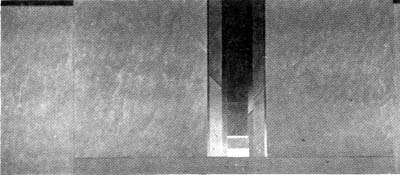
Lelde Alida, "Cityscape," oil on canvas, 36" x 84".
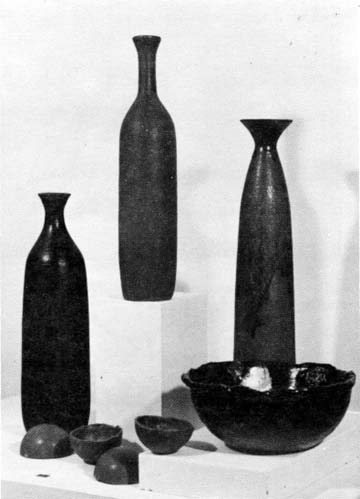
Ilmar Graudins and Juris Graudins, "Empty nest with bowl and vases," ceramics.
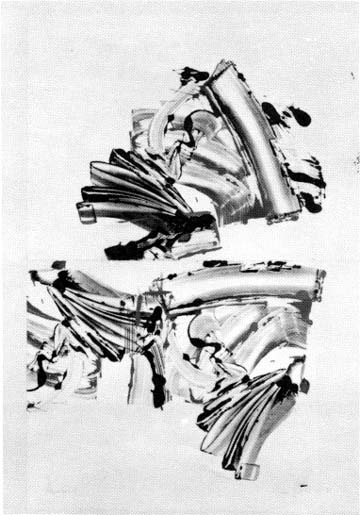
Uldis Krumins, "Nike," monoprint, 48" x 36".
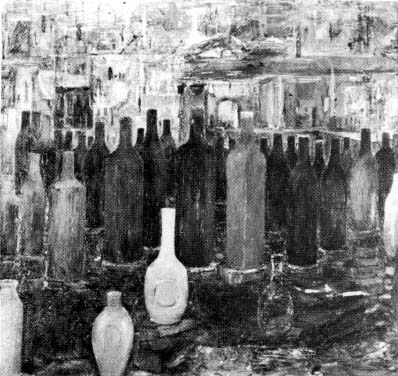
Inese Liepins, "Storm," mixed media, 36" x 36".
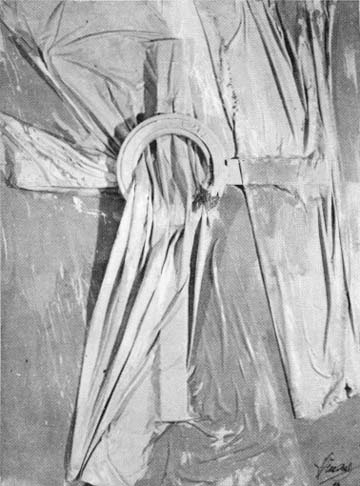
Vitauts Simanis, "Year 1981," mixed media, 38" x 48".
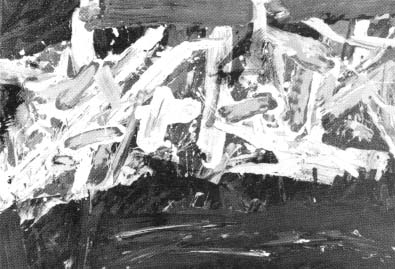
Ojars Steiners, "Untitled #33," acrylic on canvas.
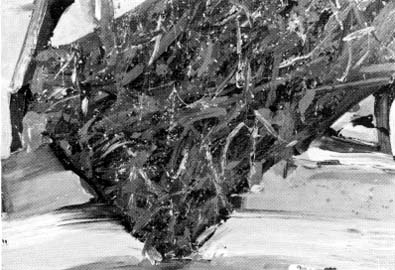
Ojars Steiners, "Untitled #31," acrylic on canvas.
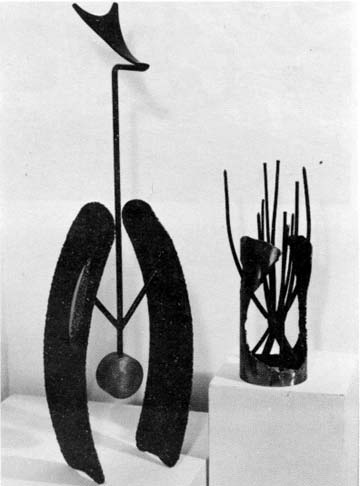
Arvids Strals, "Birds of fiction" and "Play with circle," steel sculpture.
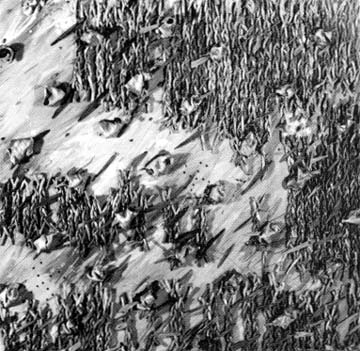
Janis Strods, "House of Justice," oil on flax, 32" x 26".
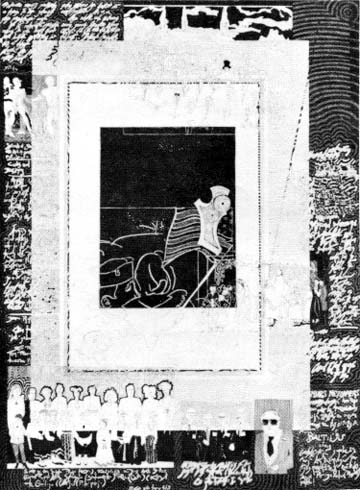
Rūta Daugaviete, "Letts Dance," Ink drawing.